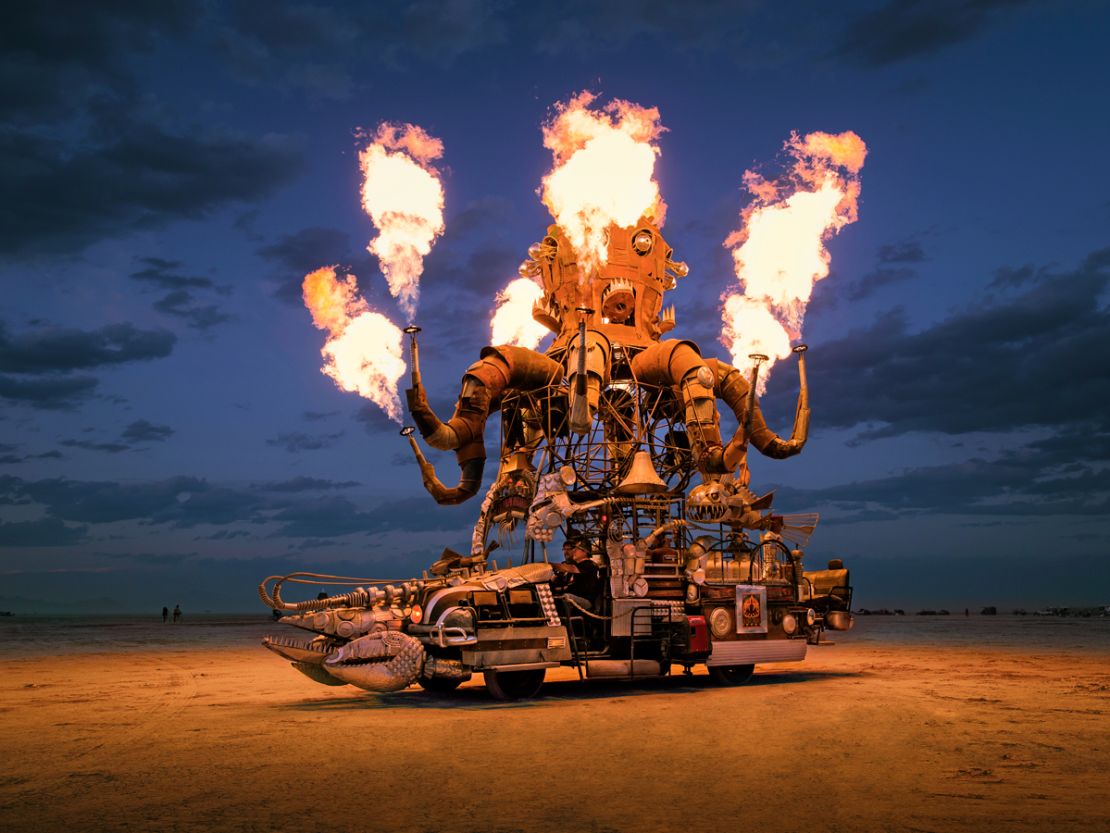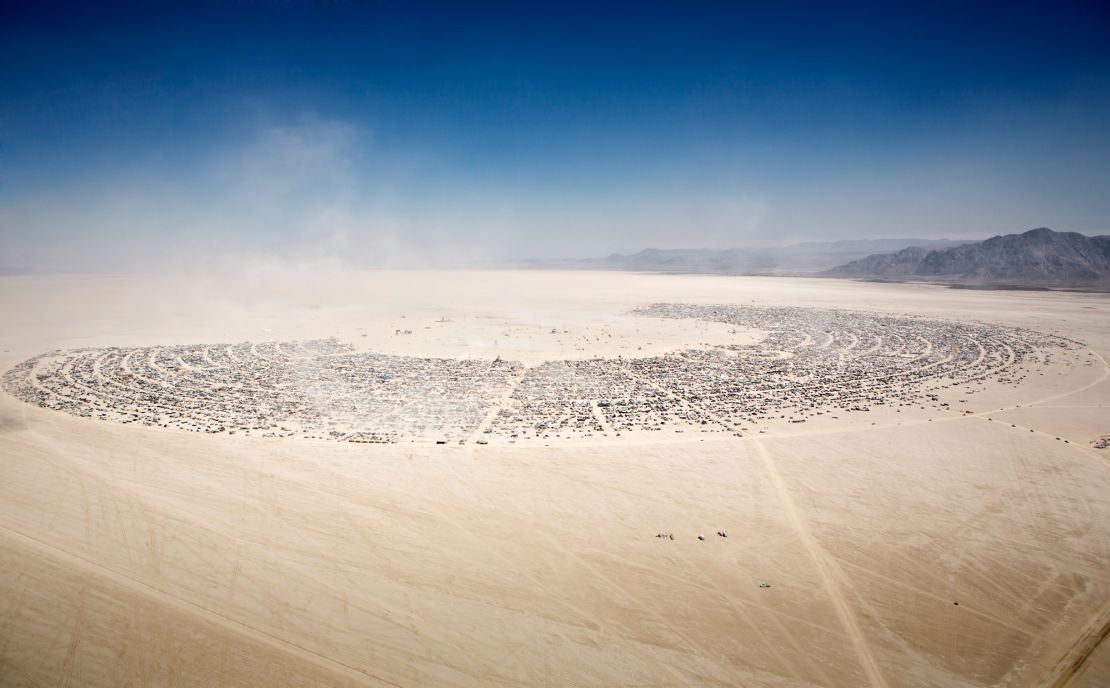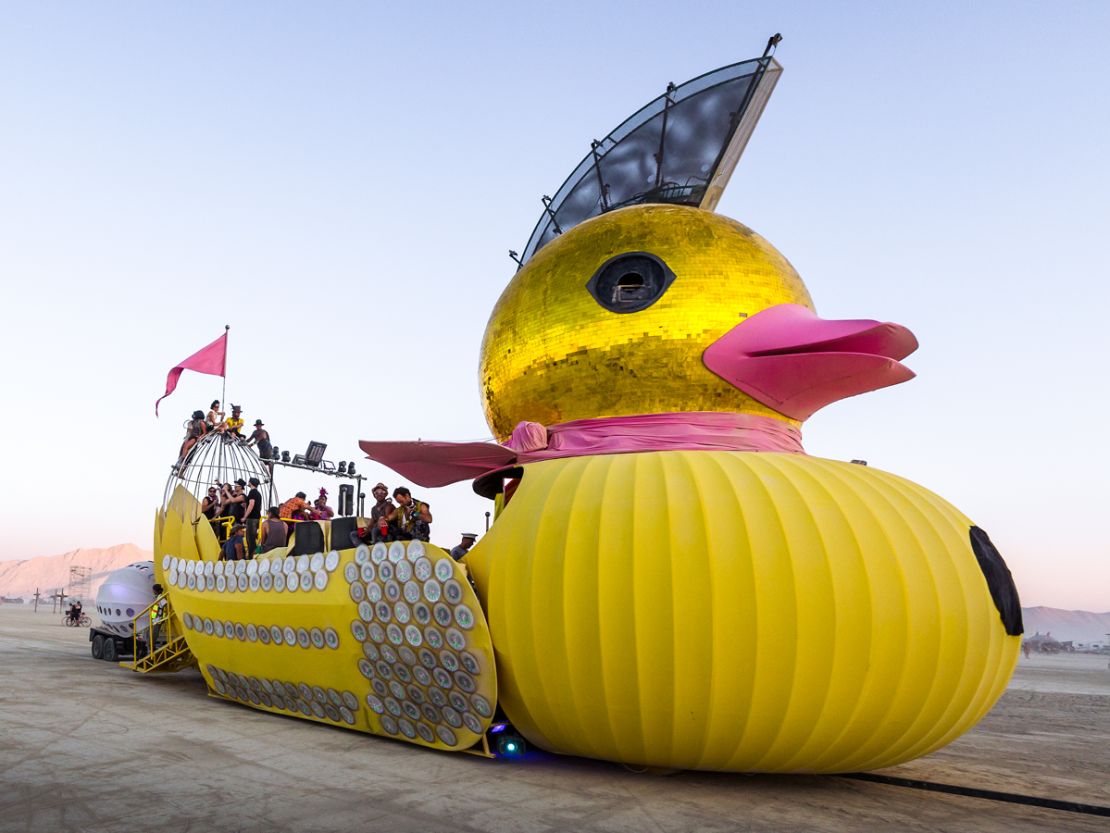They arrive in parts – on the back of semi-trucks or hitched to trailers – after being shuttled up America’s Interstate 80 highway to Nevada’s Black Rock Desert, the site of the annual Burning Man festival.
Here, on the region’s salt flats, the individual pieces – steel, wood, papier-mâché and a myriad of other materials – are assembled into one of the festival’s most striking pieces of art: Mutant Vehicles. These often spectacular cars would fail any standard road test, but must pass the criteria set by Burning Man’s Department of Mutant Vehicles (DMV) to be granted a festival license.
This means they must “be completely mutated – showing little or none of the original base vehicle,” according to the DMV, who strive to ensure a “balance” of mutated machinery. The strict criteria means only 650 licenses were granted this year. Other motorized vehicles are largely banned, and most of the tens of thousands of attendees must travel by foot or bike.
Photographer Scott London has spent over a decade documenting the festival, chasing the vehicle’s owners on a “janky old bike”. His images have recently been published in a revised edition of “Burning Man: Art on Fire,” a book that documents the festival’s art.
Here, he discusses the mutant rides with CNN Style.

CNN: How is documenting Burning Man different from your other photography projects?
Scott London: Burning Man is a laboratory for creative expression – whether it’s showing a skill like stilt walking or fire dancing, an outfit, an art car or art installation…already that’s fascinating; you see things you don’t get to see elsewhere.
It’s also an uncommonly beautiful natural landscape. The dry lakebed there, known as the playa, is made out of alkaline dust. It’s almost white and reflects light. So it’s a tabula rasa, or blank slate, from a photographer’s standpoint. It’s nothing like you’ve ever seen anywhere else.
One of the main subjects that you’ve photographed at Burning Man is the festival’s thriving culture of art cars. Tell us about your fascination with these mobile art vehicles.
Necessity is the mother of invention, and that’s how these vehicles came about. It goes back to the early 90s, when people needed to get around in something that wasn’t quite a car.
So, if you brought a car and decorated it enough, it was then considered ‘art’, and you could drive it around the playa. In some ways it inspired today’s maker-faire culture. Burning Man was encouraging people to make stuff early on. The cars show just how wild and fanciful these artists’ imaginations are.

What sort of “mutant vehicles” have you seen?
There’s a real spectrum – ranging from fine art, to rolling nightclubs, to glorified golf carts.
Some vehicles are by bonafide artists who dedicate a lot of love and artistic flair, and create something outlandish – like a submarine, magic carpet, or shark. This is what they do, these are their life works and their pieces are mobile art in the true sense.
One of my favorite works, “El Pulpo Mechanico”, is a mechanical octopus by Duane Flatmo that is taken around the country and shown at art fairs and festivals. It’s eye-popping. It’s such a crowd favorite. As soon as it comes out, crowds flock to it. It shoots out flames from its tentacles. It’s a real original.
CNN: How have the art cars evolved through the years?
For better or for worse, the cars as a whole are becoming bigger, more expensive, and more sophisticated.
We have seen some well-heeled theme camps (groups of Burning Man participants) with money to burn, commission things that are pretty amazing. Last year, there was this giant rubber duck built on top of a big bus with a dance floor and laser displays.

CNN: How do you get around to take photos and are you able to photograph all the mutant vehicles each year?
Sometimes I get rides on art cars. But if you ride on someone else’s art car, you’re stuck with where they want to take you, and often that’s at 5 miles per hour – the Burning Man speed limit – which is very slow. I can ride faster on my bike. I have a janky old bike.
I’ll be on my bike, and chase after them. I’ll talk to the artists while they’re driving and exchange a few words. ‘What is the name of this art car? What is this? How many years have you been here?’
As Burning Man becomes more popular, the distances become increasingly vast. Now it’s a 5-mile stretch. I only see a fraction of the hundreds of cars in passing. It’s impossible to see everything.
This interview has been edited for length and clarity.























